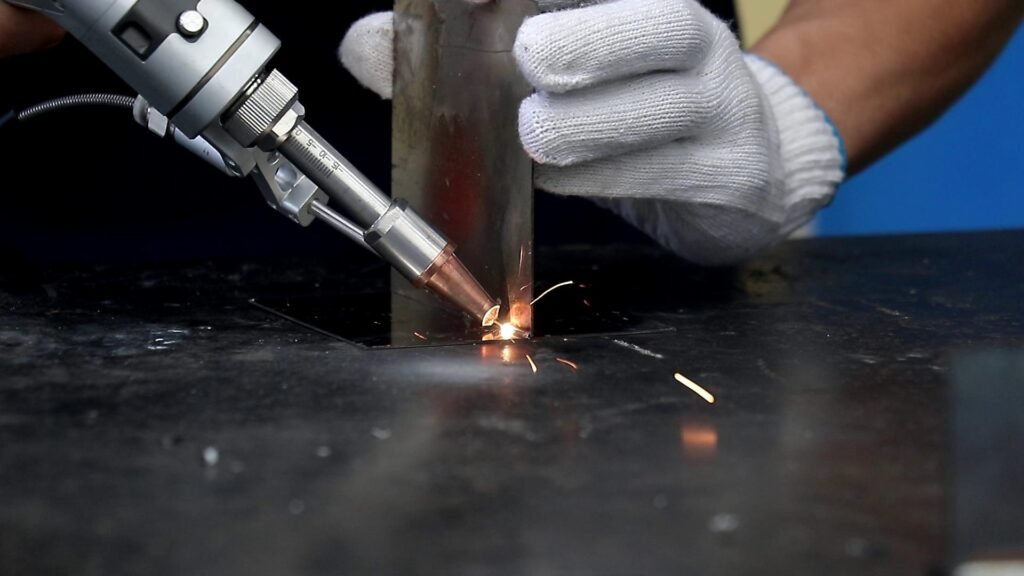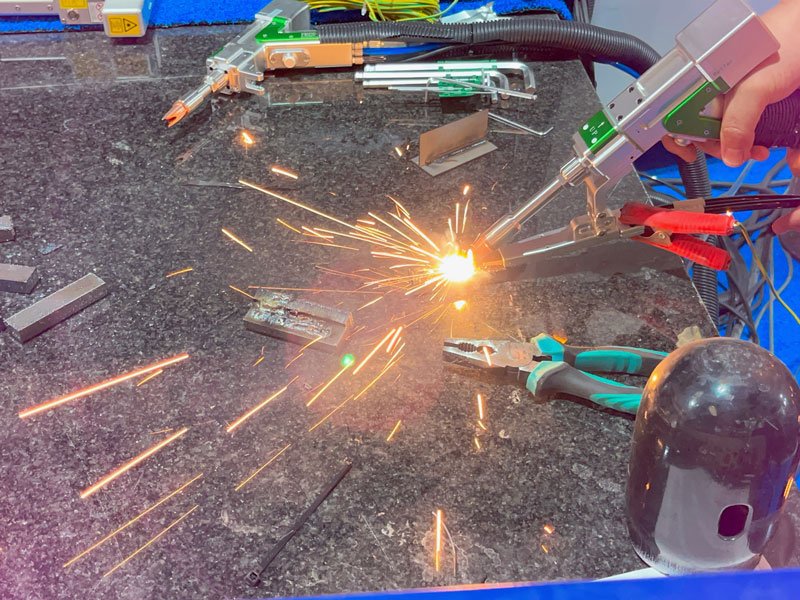Welders will experience aluminum welding deformation during the actual production process, which seriously affects the work progress and increases the workload.
Aluminum welding deformation reasons
The linear expansion coefficient of aluminum alloy is high, and it expands too fast when heated. During welding, the aluminum alloy will be deformed under the influence of heat.
Aluminum alloys have low strength at room temperature and are easily stretched and deformed. During the heating process, the temperature of the welding joint is high, and the aluminum alloy at the welding joint will undergo plastic deformation, resulting in deformation.

What is distortion in welding
During the welding process, after the steel is heated and melted, it is caused by unbalanced shrinkage during the cooling and shrinkage of the steel due to thermal expansion and contraction.
Factors affecting welding deformation
Material
The physical properties of the material itself, the thermal expansion coefficient, yield limit and elastic modulus have an impact on the material.
The larger the expansion coefficient, the easier it is to deform;
As the elastic modulus increases, the welding deformation decreases;
A large yield limit results in higher residual stress and increased deformation.
The expansion coefficient of stainless steel is greater than that of carbon steel. Therefore, for two materials of the same thickness, the welding deformation tendency of stainless steel is greater than that of carbon steel.
Structure
The design of the welded structure has the most critical impact on welding deformation. As the degree of restraint increases, the welding residual stress increases and the welding deformation decreases accordingly.
Craftsmanship
The influencing factors are welding method, welding heat input (current and voltage), positioning or fixing method of components, welding sequence, and the use of welding fixtures. The biggest impact is the welding sequence.

Distortion in welding aluminum hazards defects
Reduce assembly quality:
Welding deformation causes the size and shape of the welded parts to deviate from the design requirements, causing problems such as too large or too small gaps, misalignment or overlap during assembly, affecting the accuracy and firmness of the assembly.
Affects appearance quality:
Welding deformation causes defects such as unevenness, bending and distortion on the surface of the welded parts, affecting the appearance and integrity of the product.
Reduce load carrying capacity:
Welding deformation causes changes in the geometric dimensions of the welded parts, causing changes in their stress state and affecting their ability to withstand loads.

How to avoid aluminum welding deformation
Improve structural stiffness:
Structural stiffness refers to the ability of a structure to resist deformation. The greater the structural stiffness, the smaller the welding deformation; the smaller the structural stiffness, the greater the welding deformation. When designing, the structural rigidity should be increased as much as possible, such as adding stiffeners, reinforcing ribs, and adopting box structures.
Reduce weld size:
Weld size refers to the width, depth and length of the weld. The larger the weld size, the greater the heat input and the greater the welding deformation; the smaller the weld size, the less heat input and the smaller the welding deformation. On the premise of ensuring welding quality and strength, the size of the weld should be reduced as much as possible, such as using smaller groove angles, gaps, and number of layers.
Reduce the number of welds:
The number of welds refers to the number of welds that need to be welded in the same structure. Generally speaking, the greater the number of welds, the greater the heat input, and the greater the thermal stress and thermal deformation; the smaller the number of welds, the less heat input, and the smaller the thermal stress and thermal deformation. On the premise of ensuring structural integrity and load-bearing capacity, the number of welds should be reduced as much as possible, such as using thicker plates, larger sections, simpler shapes, etc.

Reasonably arrange the weld position:
Weld position refers to the distance and direction of the weld relative to the central axis or neutral plane of the structure. The closer the weld position is to the central axis or neutral plane, the better the symmetry, the better the balance, and the smaller the welding deformation; the farther the weld position is from the central axis or neutral plane, the worse the symmetry, the worse the balance, and the lower the welding deformation. The greater the deformation. When designing, the weld position should be as close to the central axis or neutral plane as possible, and symmetry and balance should be maintained.
Reasonable selection of welding sequence:
The welding sequence refers to the order in which each weld seam is welded in a certain order and direction. Generally speaking, the welding sequence should follow the following principles: first butt joint and then fillet welding, first center and then periphery, first symmetry and then asymmetry, first segmentation and then continuous, first jump welding and then reflow welding.
Reasonable selection of welding parameters:
Welding parameters refer to various factors that affect the welding process, such as current, voltage, speed, polarity, gas flow, etc. Welding parameters should follow the following principles: minimize heat input, maximize thermal efficiency, and try to evenly distribute heat.
Aluminum welding deformation is an inevitable phenomenon that affects the quality, performance and cost of welded products. We should take effective control measures from three aspects: design, process and correction to eliminate or reduce the occurrence of welding deformation. We should also choose appropriate methods and parameters according to different materials, structures and conditions to ensure the safety and reliability of welding.
